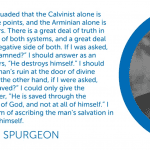Biblical scholars commonly criticize other biblical scholars for being inconsistent in their handling of literal and figurative language. If one bit of a text is literal, it is assumed, the whole must be; and vice versa.
This demand for consistency is mistaken, and can only lead to absurdities.
Take the figure of “Babylon” in the book of Revelation. Babylon is a great city, and a great harlot. The word “Babylon” has to be taken literally. A city might be full of harlots, but the city itself cannot be a harlot.
Yet deciding that “Babylon the great harlot” is figurative does not mean that there is no literal city. It doesn’t predetermine us to an “idealist” reading of the figure – that Babylon is code for an abstraction like “the city of man.” Even idealist readings believe that the figure has a literal referent – many literal referents, in fact, since the city is a figure for a permanent historical type. Many commentators believe that “Babylon” refers to a specific city (Rome and Jerusalem the two leading candidates), and don’t have any qualms about the resulting mix of literal and figurative.
Taking Babylon as a figure does not commit us to taking every detail of John’s description literally. John sees Babylon dressed in scarlet and purple, wearing a name on her forehead, drinking blood from a golden cup. We don’t need to ask whether cities have foreheads, or whether they can wear clothes, or where you find a city’s hand to hold a golden cup.
All of those too have some sort of literal referent: The harlot city Babylon kills martyrs; she is “bloodthirsty.” That’s real. But it doesn’t mean that the majority of her inhabitants are vampires. I think her clothing and headgear indicate that she is a priestess. Each of the features of John’s description is symbolic, but symbolic of something real, in space and time.
The description is a blessedly bewildering mash of literal and figurative, and as readers we have the priestly-royal privilege of drawing lines and making distinctions.
How do we do that? How do we know the difference between literal and figurative? There’s no trick. There’s no machine. There’s no manual.
Start by refusing to polarize the two. Start by cultivating a sacramental imagination that can see bread and body, water and Spirit, city and harlot, tree and man, together at a glance. And then, armed with a transformed imagination, learn to read.














